
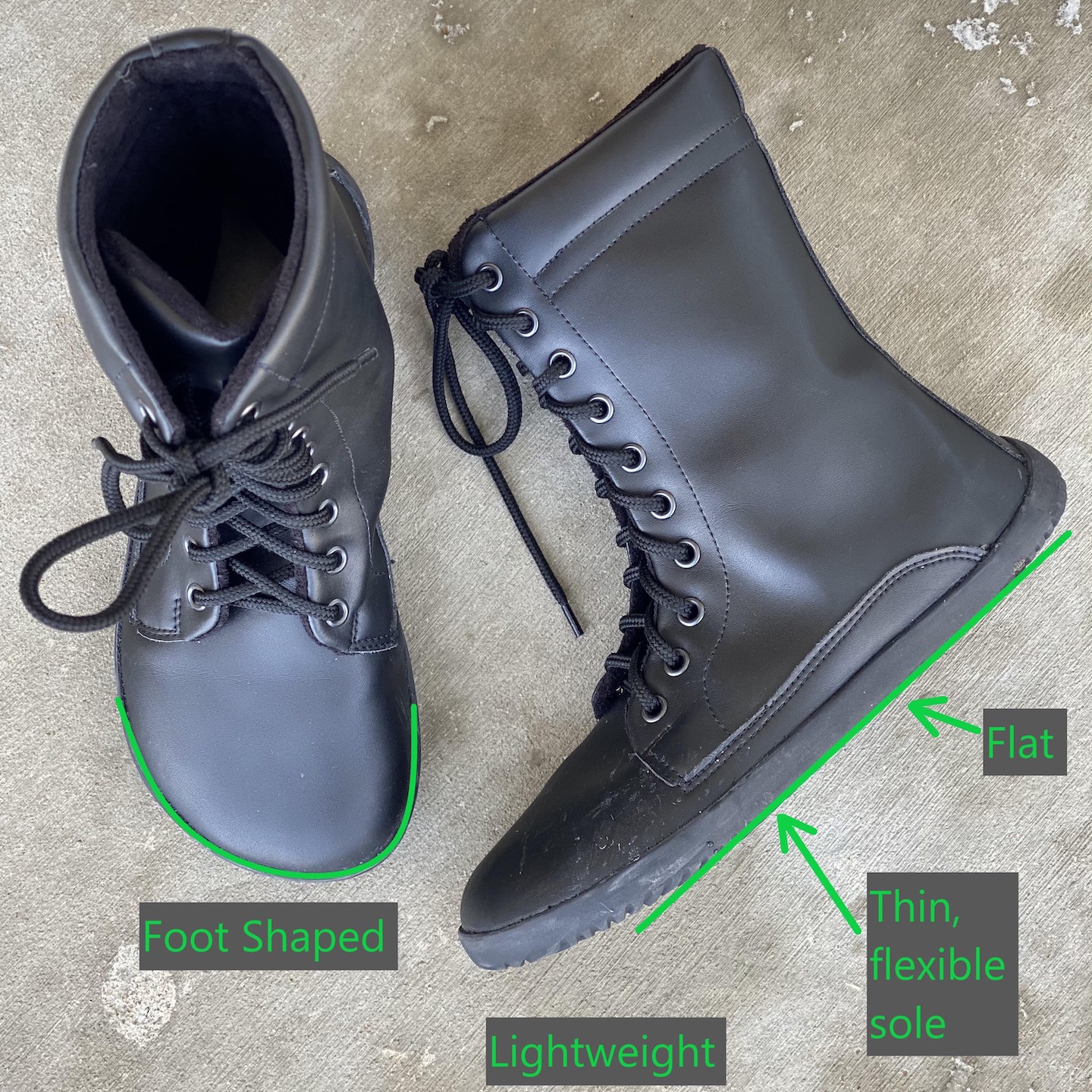
Whether you call them natural footwear, barefoot shoes, minimalist shoes, or functional footwear, they all serve the same purpose: to allow your feet to fully function the way they would if barefoot.
By contrast, most of the shoes you see when you go shopping (like the example on the left) are the exact opposite! Feet are a critically important part of our body and yet we continually trap them in stiff, restrictive shoes to the point we don’t even realize it. That’s why we at the Barefoot Shoe Finder are making it easy to find healthy footwear. Because there are MANY minimalist shoe options that look cool, but are actually comfortable and good for your feet.
We chose to use the term “Barefoot Shoe” on this website because it is an easily recognized and evocative term. We understand that our take on what is a barefoot shoe may differ from how individual brands refer to themselves. But for our purposes here, a barefoot shoe has the following minimum qualities:
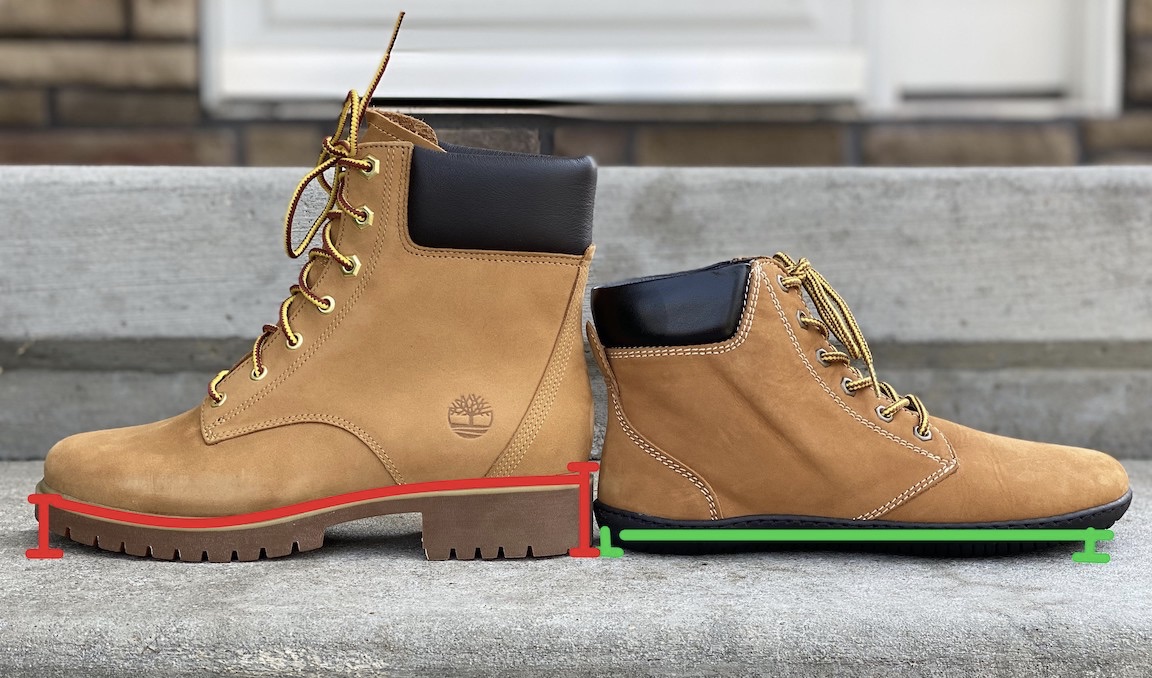
Most shoes you find at the store today have a moderate heel rise, even sneakers and ballet “flats”. But heeled shoes put extra stress on the joints throughout your entire body. Just look at the image below to see the awkward compensations we have to do in heeled shoes! For the long term health of our feet and body, shoes should be completely flat - or zero drop.
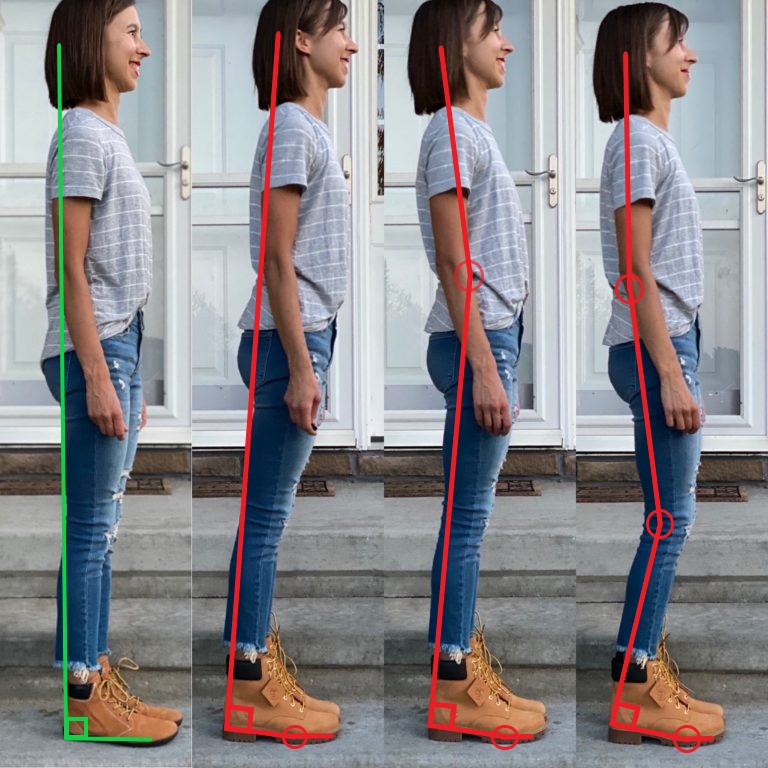
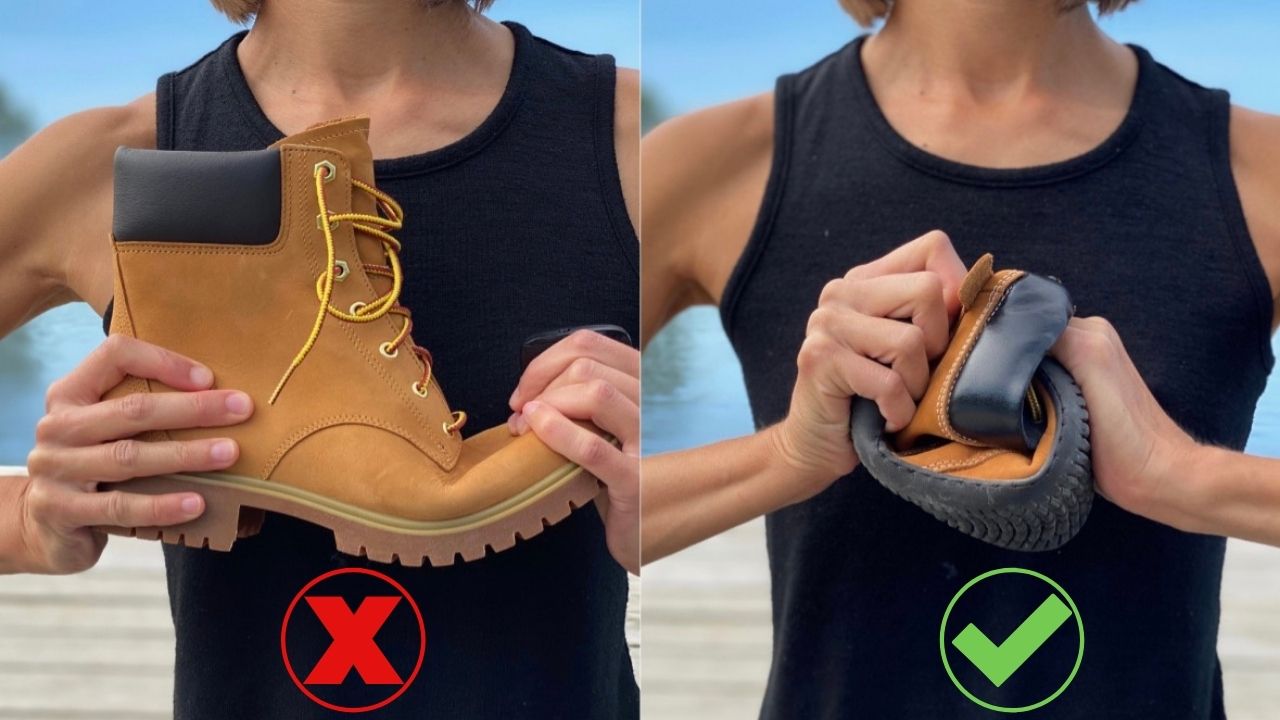
Feet are meant to move a lot, but stiff shoes prevent that from happening. There are tons of intricate muscles in your feet that can waste away when not used. Flexible shoes keep them strong and supple because you use your whole foot with every step!
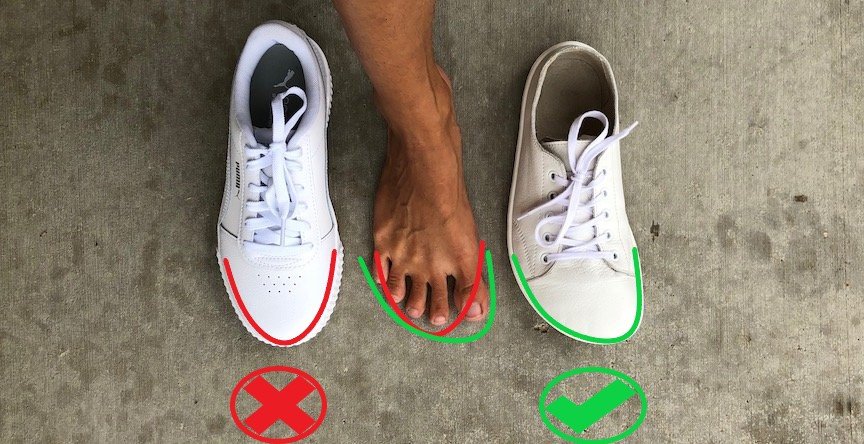
Amazingly, it’s rare to find a mainstream shoe that actually matches the shape of a human foot. Even comfortwear usually has a tapered toe box that can contribute to the formation of bunions and make you less stable on your feet. The big toe should be allowed to lay straight so it can do its job of balancing you.

When your shoes don’t stay put the natural reflex is to grip your toes. This can cause uneven wear and tear on your feet and lead to issues like hammertoes. A secure fit allows your feet to relax and move naturally.
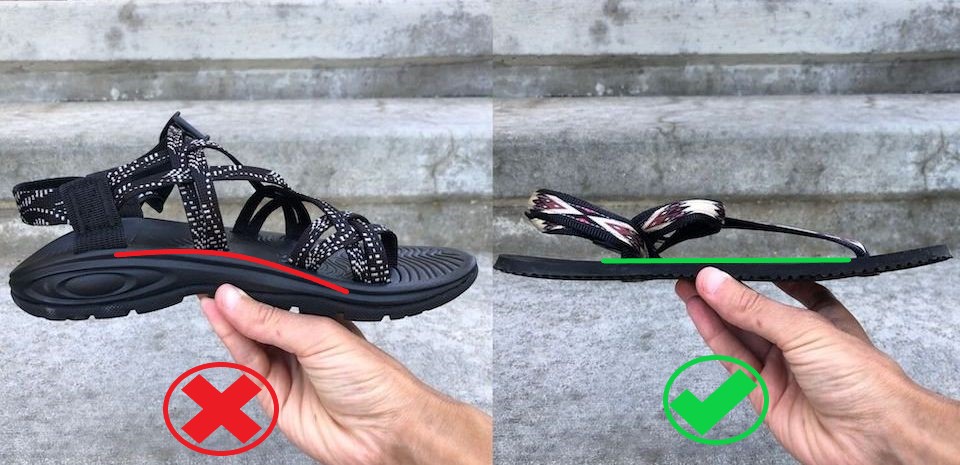
Pronation, the flattening of the arch, is actually a normal and necessary part of human movement. When you stick an artificial arch underneath your foot you are not allowing it to use the muscles that naturally support you. Human feet were designed to carry our bodies. If we strengthen them, support is not necessary.
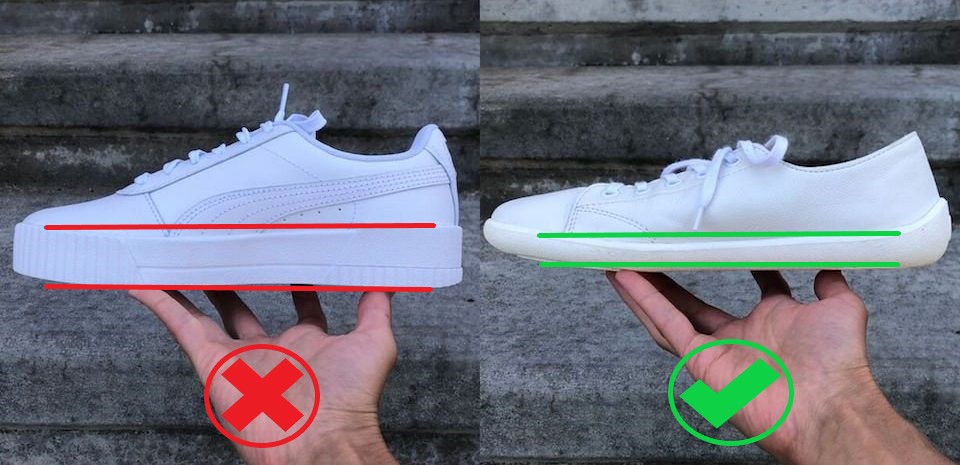
Thin soled shoes allow you to feel the ground underneath you, making you much more competent as you move across land. The tiny muscles in your feet are able to respond, which further contributes to your strong stable foundation.
*For the purposes of this website, we’ve included thick-soled options that meet all other barefoot shoe requirements because some people need cushion as they transition to barefoot shoes, for certain medical conditions, or because they run long distances.
For more on what makes a barefoot shoe and why it’s so important, read this post:
The Benefits of Barefoot Shoes
Disclaimer - This is not a substitute for medical advice.